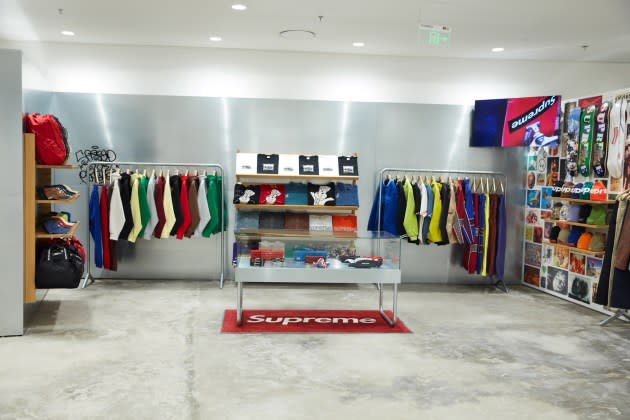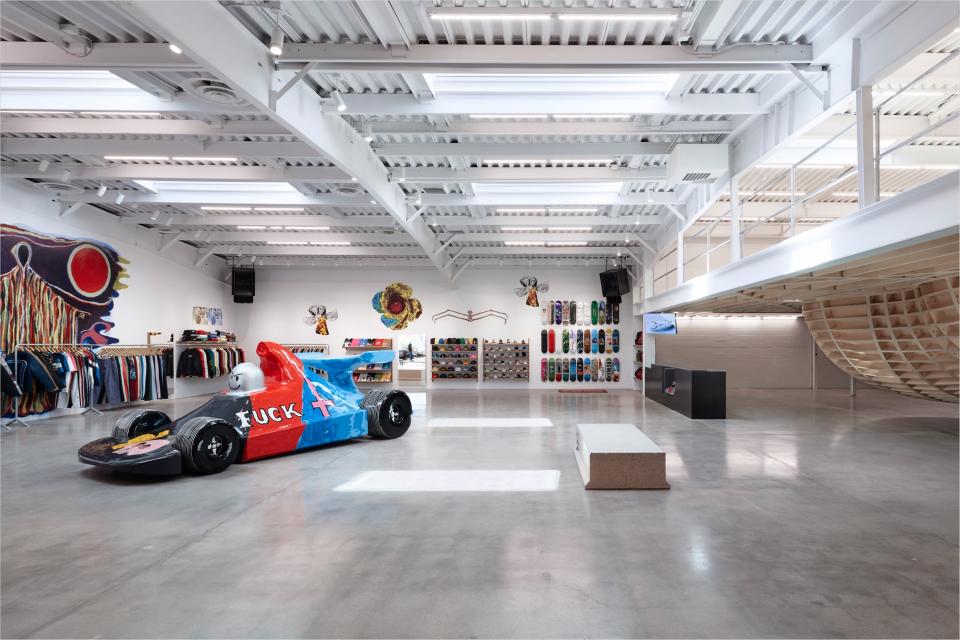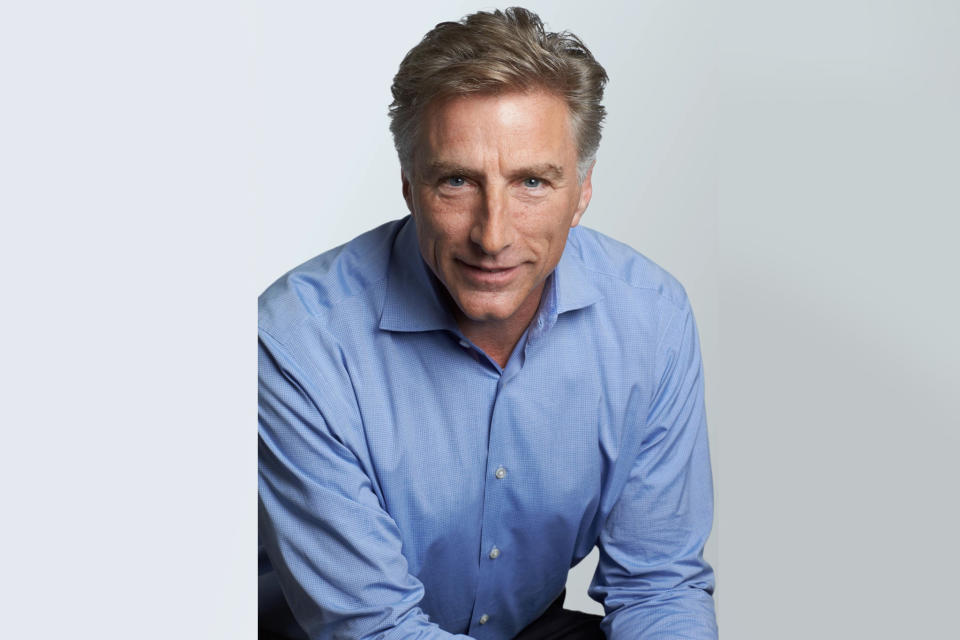VF Hired Goldman Sachs to Consider Selling Supreme, Sources Said

The future is coming for Supreme.
Financial sources said the luxury streetwear brand is quietly being shopped around to potential buyers and that VF Corp. — which bought Supreme for $2.1 billion in 2020 — is working with Goldman Sachs to review its portfolio at large.
More from WWD
EXCLUSIVE: Military Jackets and Ballgowns Inspired Dior's Capsule With Cult Brand Stone Island
To Drive Growth in Brazil, Authentic Brands Group Names New Regional Head
While VF Corp. has been public about its desire to spin off parts of its business, it has not disclosed that it is working with Goldman or that Supreme was one of the brands tagged for sale.
A spokesman for VF said: “As a matter of policy, we don’t comment on market rumors or speculation.” A spokeswoman for Goldman Sachs declined to comment.
Supreme has been something of a fascination for fashion — and for the dealmakers who watched as private equity giant Carlyle invested in the business at a $1 billion valuation in 2017 and then doubled its money with the VF deal.

Both of those sales prompted questions about how the ultra buzzy and quirky Supreme, which set the agenda in luxury streetwear, would fare under corporate ownership.
The business has grown, but its light has faded somewhat.
“The brand got too big to continue to be cool,” said one investment banker who works in the fashion space.
It didn’t help that under VF, Supreme ran into some supply chain problems in 2022 — a surprising turn of events given the strength VF traditionally showed in the area and the focus on nurturing the brand.
In fiscal 2023, VF took $735 million in charges against the goodwill and indefinite-lived trademark of Supreme, tied to higher interest rates and foreign currency fluctuations. As those charges were logged, VF’s now outgoing chief financial officer, Matthew Puckett, acknowledged that the Supreme business was “uneven” that year.
But things have perked up since and Puckett had a more bullish update on the brand in October, reporting double-digit growth.
“The August opening of Supreme’s new store in Seoul is off to a terrific start and has delivered impressive results across a number of metrics, a strong proof point on the road map of our grow-wide strategy, which is aimed at expanding access to the brand to more consumers globally,” the CFO told investors.
Most recently, he said the brand has seen “positive momentum.”
There have been other setbacks along the way. The brand hired Tremaine Emory as creative director only to see him leave in August over what he described as “systemic racial issues” at the brand. The brand disagreed with that characterization at the time.
Founder James Jebbia still runs Supreme — and remains well respected in the industry — but has had to navigate some pretty choppy waters at VF, where the brand is just part of a much larger picture.
VF, which has annual sales that approach $11 billion, owns the footwear-centric brands Vans, Timberland and Altra, performance apparel brands Smartwool, Icebreaker, outdoor brands The North Face and Napapijri and workwear name Dickies. The company’s backpack business, including Kipling, Eastpak and JanSport, is in the midst of a sale process already.
It’s not clear how many of the brands VF is looking to ultimately sell, but the portfolio has been under the microscope for some time. Activist investor Engaged Capital pushed for the company last year to consider selling all of its brands except for the large but struggling Vans and the company’s traditional powerhouse The North Face.
For years, VF was the major portfolio player in fashion and was more active than most, spinning off brands that no longer fit the vision (setting Lee and Wrangler free in 2019) and buying up new properties (like Supreme).
But something different is going on this time through.
After years of go-go growth from Vans, the brand lost its edge and started to rely too much on its classic looks and headed into a protracted downturn. That hit just as the company faced an $875 million tax bill tied to the 2011 acquisition of Timberland and as debt accumulated in the Supreme deal weighed on its balance sheet.
Altogether it was too much for VF. The company’s share price plummeted from over $100 at the start of 2020 to $12.86 on Tuesday, when the stock closed up 0.3 percent.
Steve Rendle, president, chairman and chief executive officer, left abruptly in late 2022 and was replaced last year by Logitech International CEO Bracken Darrell, who is looking at the business with new eyes.

Darrell has been focused on the future, but when pressed by WWD in an interview in February, he said that prior management ran their play well — buying brands that could benefit from the company’s then-rock solid supply chain. But then, he said, VF “lost the plot a little bit.”
“We probably didn’t keep the innovation lights on as strongly as we could have,” he said, referring to VF before he joined. “My experience with products is, if you don’t have great product, you don’t have a great company for very long.”
Now, Darrell is trimming down the VF portfolio and focusing in on product — at least at whatever brands remain.
Best of WWD

 Yahoo Finance
Yahoo Finance 